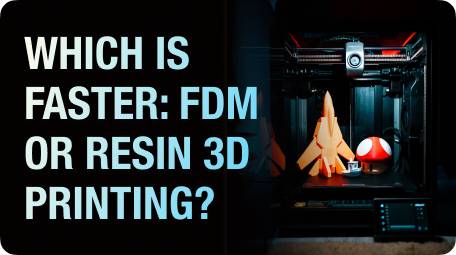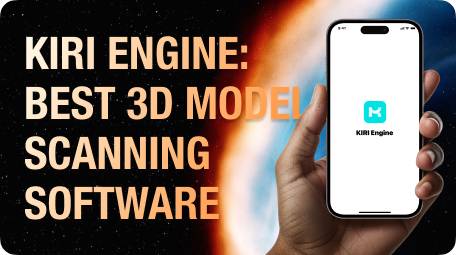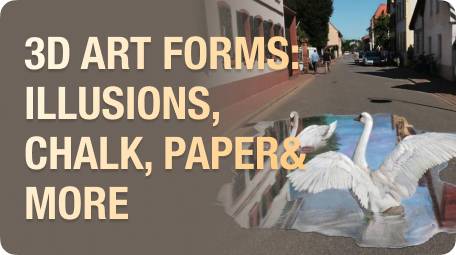3D art is a diverse and captivating realm where creativity transcends dimensions, bringing depth and texture to artistic expression. From mesmerizing 3D illusion art and striking chalk masterpieces to intricate paper sculptures, pixel-based designs, and even innovative fingernail and erotic art, each form offers a unique way to engage the senses. These art styles challenge perception, enhance storytelling, and push the boundaries of traditional mediums. Whether crafted through digital techniques, physical materials, or a combination of both, 3D art continues to redefine how we experience visual creativity.
3D Illusion Art
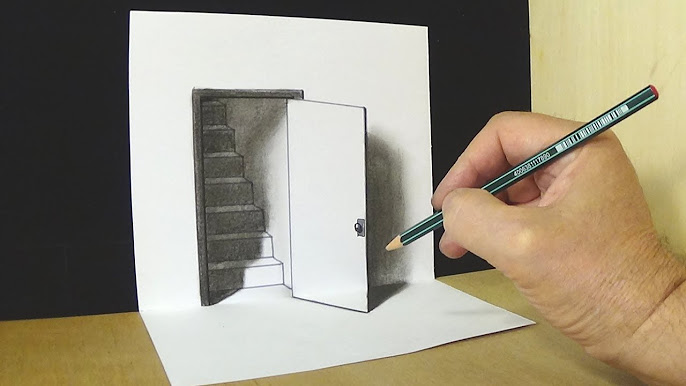
Graphite 3D Illusion Art
3D illusion art is an artistic technique that manipulates perspective, light, and shadow to create visuals that appear three-dimensional on a flat surface. This art form is designed to deceive the viewer's eyes, making objects seem as if they are emerging from or receding into the background. 3D illusion art is used in paintings, murals, chalk art, digital art, and installations, and it is widely applied in public spaces, galleries, and interactive exhibits.
One of the core techniques behind 3D illusion art is anamorphic perspective, where an image appears distorted until viewed from a specific angle, at which point it transforms into a coherent three-dimensional scene. This method is commonly used in sidewalk chalk art and wall murals to create realistic illusions such as deep holes, floating objects, or immersive landscapes.
Another fascinating aspect of 3D illusion art is multi-angle perception, where a single artwork presents different images when viewed from different angles. Some optical illusion paintings, for instance, reveal one image from the left and another from the right. This technique is often used in lenticular prints, holographic art, and kinetic sculptures, allowing artworks to shift dynamically as the viewer moves.
Additionally, layered installations and mirror illusions play a significant role in 3D illusion art. Some sculptures and paintings incorporate reflective surfaces, transparent layers, or cut-out designs that align perfectly from a specific viewpoint to form a complete image. These are commonly found in museums and interactive exhibitions where visitors can engage with the artwork by moving around it.
3D illusion art is popular in urban design, street art, advertising, and theme parks, creating immersive experiences that challenge perception and captivate audiences. Whether through traditional painting techniques, digital media, or physical installations, this art form continues to push creative boundaries, making the impossible appear real.
3D Chalk Art
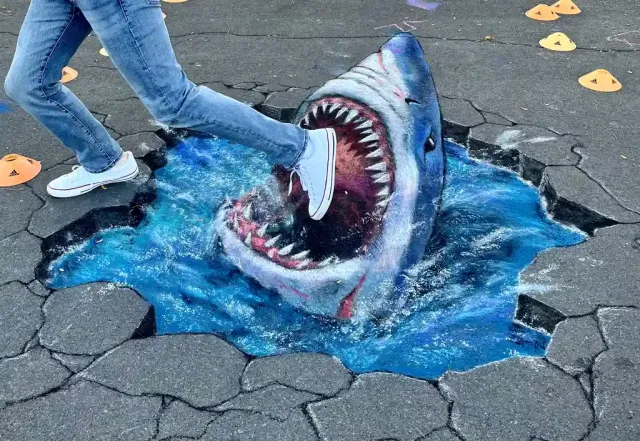
Shark Attack 3D Chalk Art
3D Chalk Art is a form of street art and a detailed branch of 3D Illusion Art that creates the illusion of three-dimensional objects on flat surfaces such as streets, sidewalks, and buildings, using chalk or pastels. Artists use perspective, shading, and optical illusions to make their drawings appear as if they are emerging from or sinking into the pavement. This type of artwork is often created on sidewalks, streets, or public squares, engaging viewers by offering interactive and immersive experiences.
The technique, known as anamorphic perspective, requires the viewer to stand at a specific angle to fully appreciate the 3D effect. Common themes in 3D chalk art include deep pits, waterfalls, animals, fantastical landscapes, or scenes that appear to allow people to "step into" the artwork. Many artists also incorporate real-life elements, such as people posing within the drawing, to enhance the illusion.
3D chalk art is temporary, as it is vulnerable to weather conditions like rain and wind. However, it is widely appreciated in public art festivals, promotional events, and social media for its captivating and interactive nature. Notable artists like Julian Beever, Kurt Wenner, and Edgar Müller have popularized this art form worldwide.
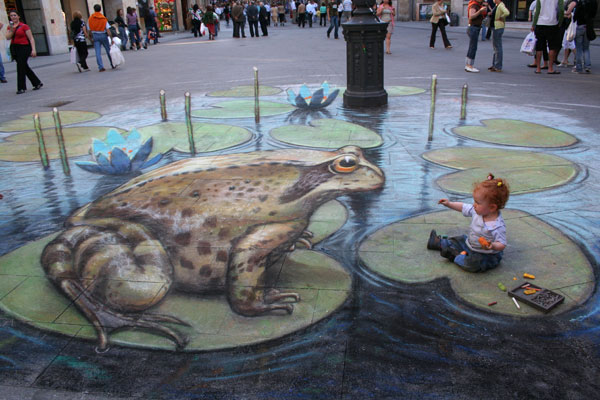
Julian Beever And Pavement Art
3D Fingernail Art
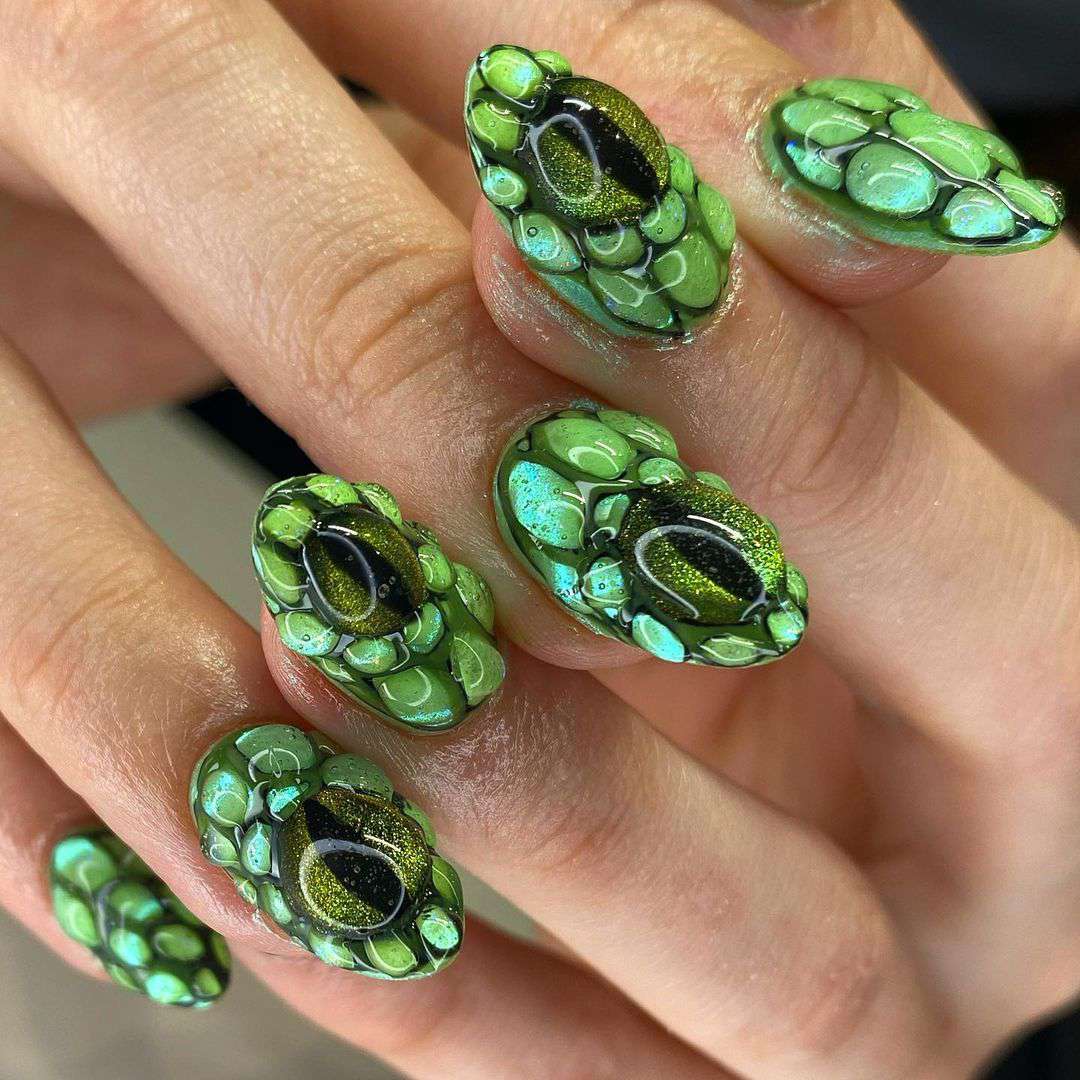
3D Fingernail Art
3D Fingernail Art is a creative and intricate form of nail design that takes nail art to a new level by incorporating three-dimensional elements, making each nail a miniature work of art. One popular example is flower 3D nail art, where delicate flowers are sculpted using acrylic or gel to add depth and texture to the nails. These vibrant and detailed flowers can range from simple petals to elaborate designs, often giving the nails a realistic and artistic appearance. Another stunning example is 3D flower nail art, where the use of rhinestones, beads, and other decorative elements further enhances the visual appeal, making the nails look more like miniature sculptures. Additionally, nails with 3D art can incorporate various other elements such as bows, hearts, or abstract shapes, all designed to pop out from the nail surface. This form of nail art showcases the versatility and beauty of 3D art, turning ordinary fingernails into eye-catching statements of creativity.
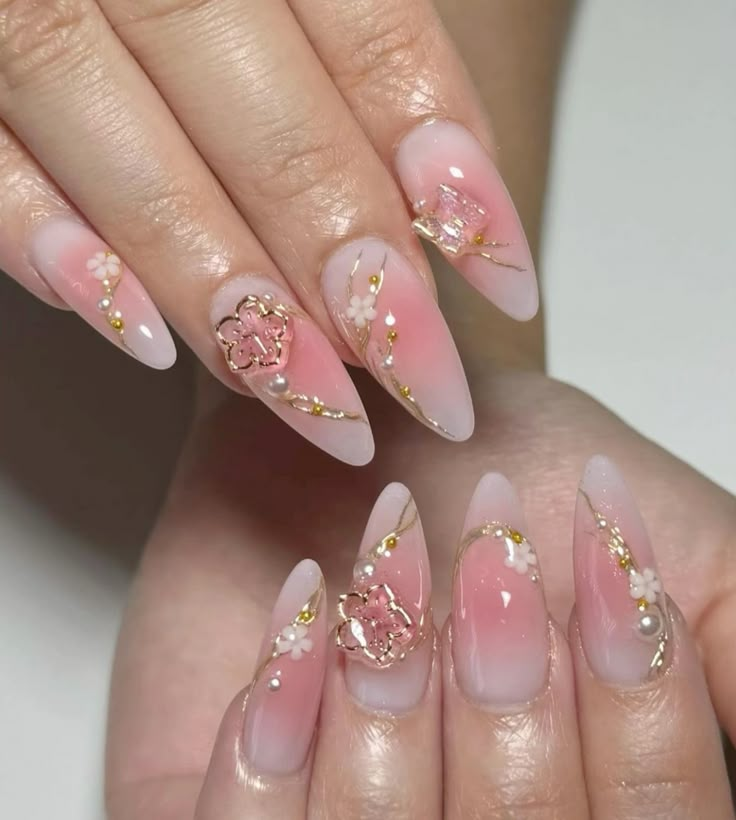
3D Paper Art
3D Paper Art is a unique and versatile form of three-dimensional art that uses paper as the primary medium to create intricate, layered, and textured designs. This art form involves cutting, folding, and shaping paper into sculptures, installations, or decorations that bring flat, two-dimensional surfaces to life with depth and dimension. Examples of 3D art in the realm of paper art are both stunning and diverse, demonstrating the creativity and skill of the artists involved.
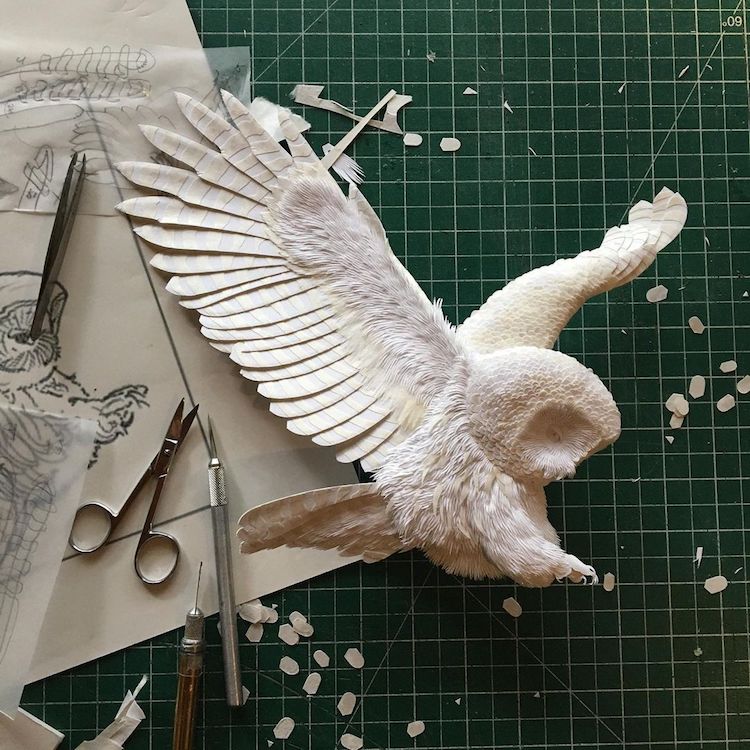
Paper Sculpture
One of the most popular 3D paper art techniques is paper sculpture, where artists carefully cut and layer pieces of paper to create detailed, realistic figures or abstract shapes. These sculptures can range from small, delicate pieces to large-scale installations that require careful planning and precision. Artists often use tools like knives, scissors, and embossing tools to shape the paper, adding texture and detail to make the artwork more lifelike. A famous example is paper flowers, where artists craft detailed, realistic flower sculptures, often using colored and textured paper to mimic the appearance of real petals and leaves.
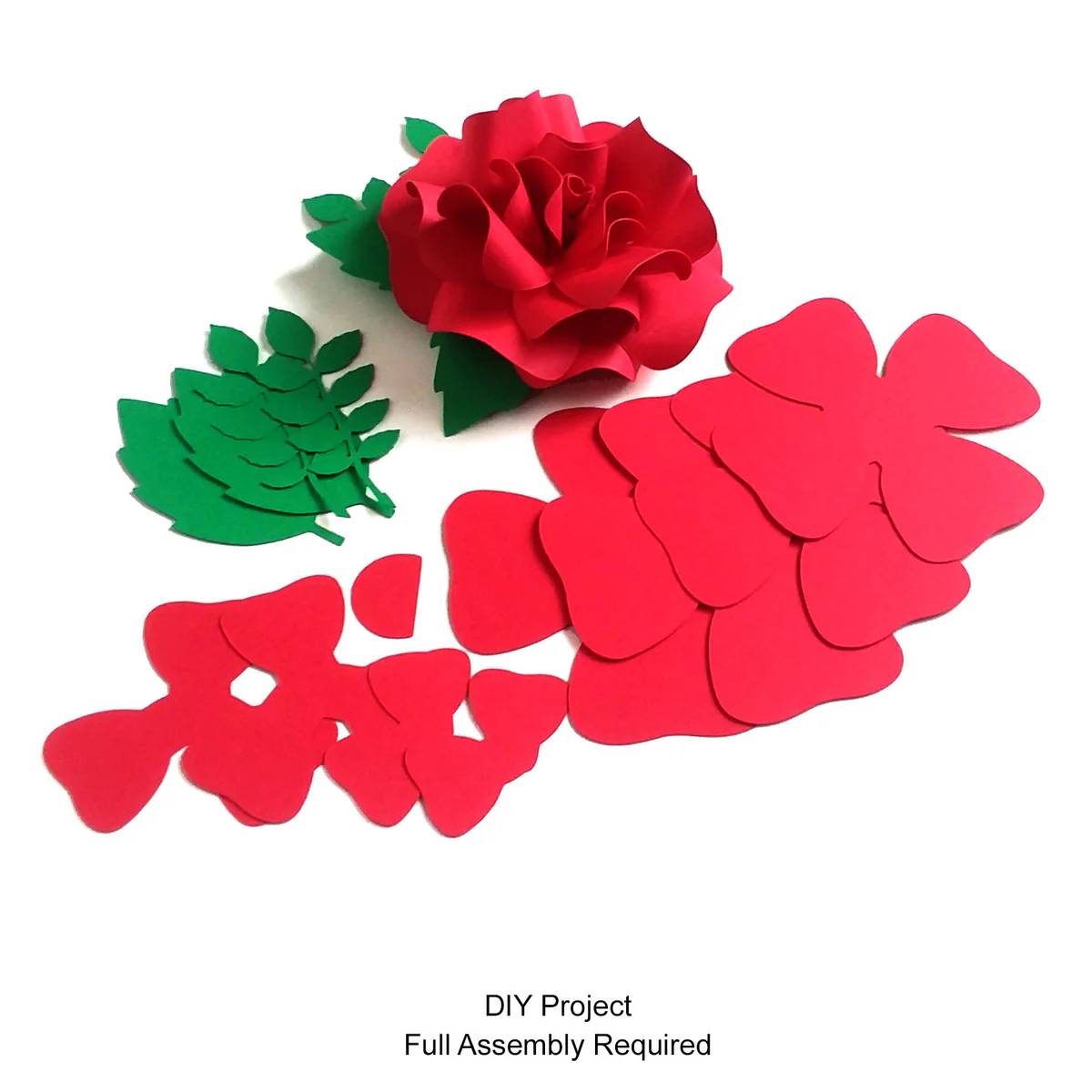
Another example is paper cut art, which involves intricate cutting techniques to create detailed, layered designs. The paper is often cut into delicate patterns and layered to produce depth, making it appear as though the artwork is three-dimensional. Shadow box art, a popular form of 3D paper art, uses layers of cut paper placed in a box frame to create scenes that cast intricate shadows when light is shone on them. This technique adds an extra dimension to the art, enhancing its depth and visual impact.
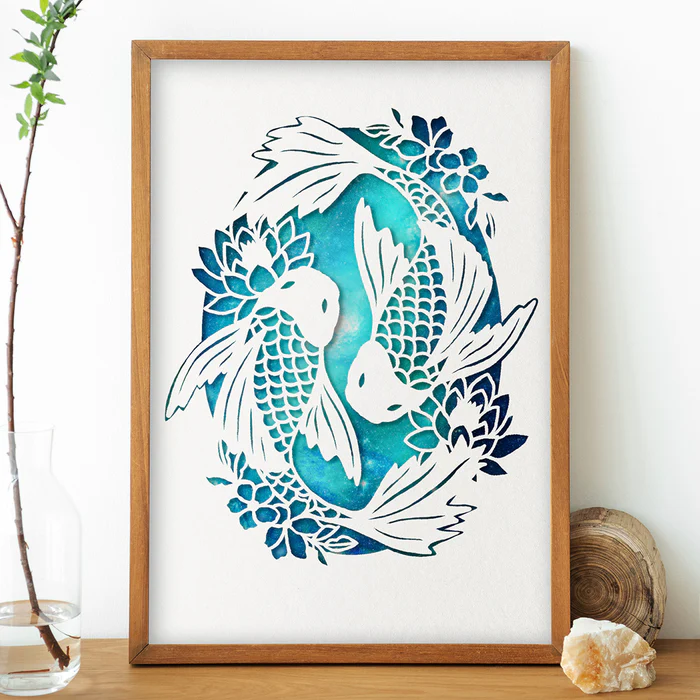
Pisces Paper Cutting Greetings Card-Paper Cut Art
3D paper art can also be used in design applications, such as paper murals or wall hangings, where large-scale designs are created using layers of paper to add texture and depth to walls or spaces. Pop-up books are another excellent example of 3D paper art, where pages fold and unfold to reveal intricate, multi-dimensional scenes and figures. These books often incorporate layers of paper that move, fold, or shift as the book is opened, creating an interactive experience for the viewer.
In the digital realm, 3D paper art is also translated into virtual designs and animations. Artists can create digital representations of paper art, which can then be printed out or used in various digital media, providing a modern twist on traditional paper art techniques. The versatility of paper as a medium allows for endless possibilities, making 3D paper art an exciting and ever-evolving field in the world of three-dimensional art.
3D Pixel Art
3D Pixel Art is a unique and compelling form of three-dimensional art that combines the pixelated style of traditional 2D pixel art with depth, texture, and volume to create the illusion of three-dimensional objects and environments. This art form takes inspiration from the blocky, grid-based aesthetics of early video games, but it incorporates modern 3D design elements to make the artwork come to life in a spatial context. Artists working with 3D pixel art use various techniques and software to create intricate and immersive pieces that retain the retro charm of pixels while adding the dimensionality of 3D space.
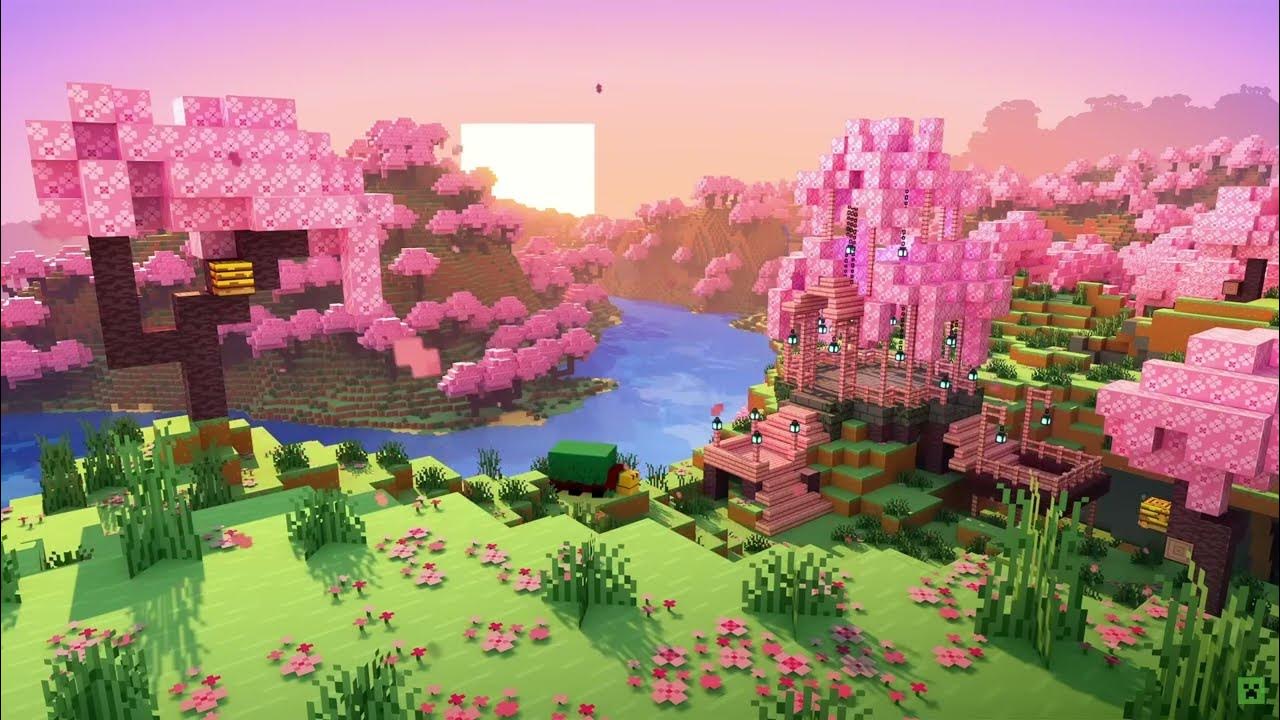
Minecraft 3D Pixel Picture
One of the most famous and widely recognized examples of 3D pixel art is the game Minecraft. In this game, the entire world is built using blocky, pixelated structures, where each element, whether a landscape or a character, is made from cubes. This approach allows players to manipulate and craft their own 3D pixel art creations within the game's sandbox environment, making it a perfect representation of 3D pixel art. The game's world may look simple at first glance, but the depth and complexity of the environments created by players demonstrate the creative potential of combining 3D space with pixel art.
3D pixel art is also evident in digital art and animations, where objects are designed with pixel-like textures but given depth and volume to make them appear more lifelike and three-dimensional. Digital artists use various software tools to add light, shadow, and perspective to these pixel-based designs, enhancing the illusion of depth and realism.
In the world of 3D pixel art sculptures, artists create tangible models using 3D-printed pixel blocks or other materials like foam, wood, or metal. These sculptures often mimic the pixelated aesthetics of digital art, turning the flat, grid-like structure of traditional pixel art into physical three-dimensional objects. These sculptures can range from abstract designs to characters or landscapes seen in video games.
3D Printable Cat — Rounded vs. Pixelated
Whether through video games like Minecraft, digital animations, or physical sculptures, 3D pixel art continues to bridge the gap between two-dimensional digital art and three-dimensional spatial design. It represents a fascinating blend of nostalgic pixel aesthetics with the modern possibilities of 3D environments, offering endless creative potential and applications in both the digital and physical art worlds.
3D Erotic Art
3D Erotic Art is a genre that explores themes of sensuality, intimacy, and human form through three-dimensional artistic expressions. This genre often employs the same techniques used in traditional 3D art—such as sculpture, digital rendering, and mixed media—but focuses on the portrayal of the human body and eroticism in a more explicit or suggestive manner. 3D erotic art can range from subtle, abstract interpretations of human desire to more explicit depictions, depending on the artist's intention and the medium used.

Auguste Rodin-The Kiss
One of the most traditional forms of 3D erotic art is sculpture, particularly in classical art. Artists like Auguste Rodin created iconic sculptures such as The Kiss, which explores themes of love and sensuality. These sculptures are crafted from materials such as marble, bronze, or clay and are often celebrated for their attention to human form, anatomy, and the intimate connections between figures. In modern times, sculptors continue to use these techniques to create erotic art, exploring themes of sexuality and human connection through lifelike, stylized figures.
3D digital erotic art has become increasingly popular, especially with the rise of computer-generated imagery (CGI) and digital art tools. Artists use software like Blender, ZBrush, or Maya to create hyper-realistic or stylized 3D models of human bodies and intimate scenes. These digital works often incorporate elements of fantasy or surrealism, creating highly detailed, immersive pieces that blur the line between the real and the imagined. Digital 3D erotic art can be viewed in a variety of formats, from still images to interactive 3D models and virtual reality (VR) experiences, where viewers can engage with the artwork in dynamic, immersive ways.
Another form of 3D erotic art is mixed-media art, where traditional materials like clay or resin are combined with modern technology, such as LED lighting or projection mapping, to create interactive or changing visual experiences. These artworks often challenge the viewer's perception of eroticism and sensuality by incorporating unexpected materials or multimedia elements. For example, a sculptural piece might feature light projections that alter its appearance, or an artwork may invite the viewer to interact with it physically, changing its form or color in response to touch or movement.
3D erotic photography also plays a role in the genre, where photographers use lighting, perspective, and digital manipulation to create three-dimensional, sensual imagery. This can involve staging real models in a controlled environment, employing techniques like forced perspective or depth of field to create the illusion of three-dimensionality in a photograph. Other photographers may use 3D rendering software to craft erotic imagery from scratch, creating hyper-realistic representations of the human form and sensual scenes.
3D erotic art often intersects with themes of body positivity, self-expression, and the exploration of desire, with artists using this medium to challenge societal norms and provoke thought around sexuality. The freedom offered by three-dimensional art allows for a more direct, tangible exploration of the human form and intimacy, making it a powerful tool for both artistic expression and cultural discourse.
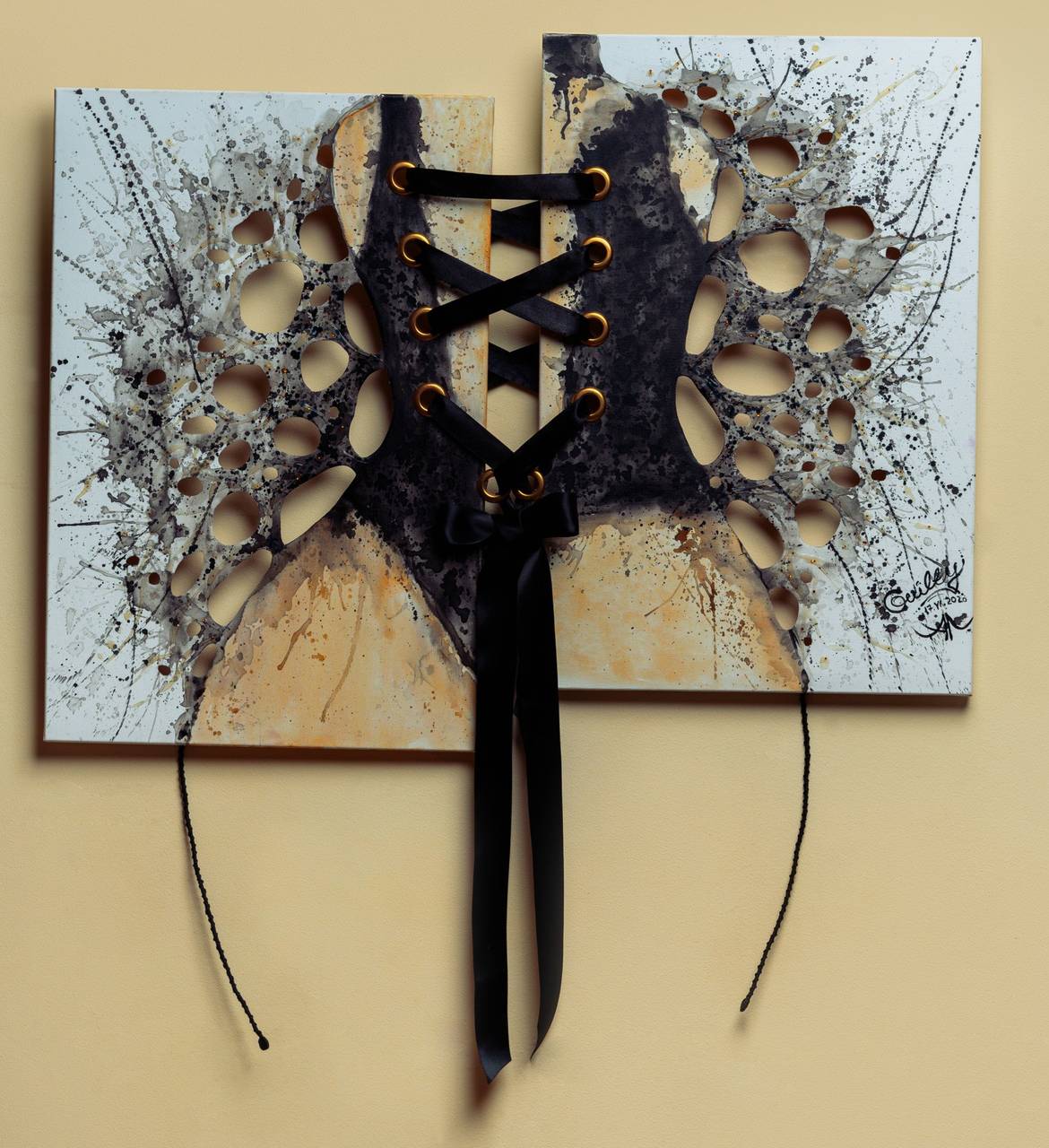
Suggestive Mixed Media 3D Erotic Art
Whether through traditional sculptures, digital models, or mixed-media works, 3D erotic art offers a visually engaging and provocative way to examine the human body, sensuality, and desire. It pushes the boundaries of how we interpret eroticism in art, engaging the viewer not only visually but often intellectually and emotionally as well.
Are You Ready to Create in Three Dimensions?
3D art is a dynamic and ever-evolving field that transforms the way we perceive and interact with artistic expression. From illusionary depth and playful chalk designs to intricate paper sculptures, pixelated creations, and even the bold exploration of erotic art, each form brings a unique perspective to visual storytelling. As technology advances, creative boundaries expand, and new tools emerge, 3D art continues to inspire and captivate audiences worldwide.
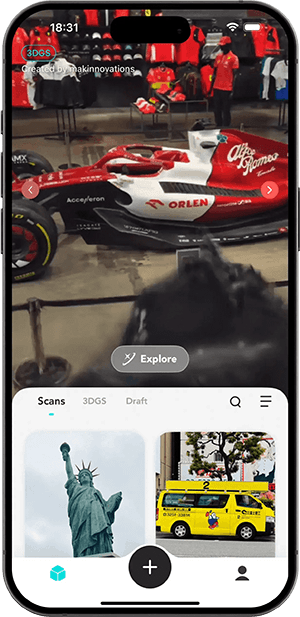
Now, with KIRI Engine, you can take your 3D art to the next level. Our advanced 3D scanning technology allows you to turn real-world objects into high-quality 3D models with ease, opening up endless creative possibilities. Whether you're an artist, designer, or hobbyist, KIRI Engine helps you digitize, modify, and bring your vision to life like never before.
Why limit yourself to flat images when you can create in three dimensions? Download KIRI Engine today and start shaping your own 3D masterpieces!




